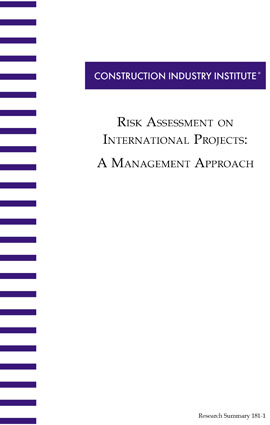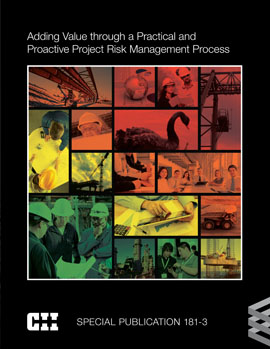
Risk Assessment on International Projects: A Management Approach
U.S. owners and contractors are aggressively pursuing international business opportunities and projects. While international projects may appear as attractive investments, such projects usually involve elevated levels of risk. The successful delivery of such projects has proven to be difficult for owners, contractors, and other participants to the process, including investors and insurance interests.
Assessing and managing risk is a complex and critical task for international construction projects. Risk assessment includes the identification, cataloging and evaluation of specific hazards and uncertainty. Risk management is the entire spectrum of activities associated with identification, evaluation, and the control or mitigation of risk. Previous CII research has documented the need for risk assessment and management procedures. When properly conducted, risk assessment and management yields:
- Early identification of hazards and opportunities
- Communication of risks between project participants
- Identification and management of uncertainty
- Acknowledgement of risk issues and mitigation actions
- Enhanced risk-based decision-making
CII formed the International Project Risk Assessment Project Team to develop a management tool to identify and assess the risks associated with international capital projects. The scope of this research was risk assessment for international projects; however, given its importance, the project team considered, to a limited extent, risk control and mitigation.
This summary provides an overview of the IPRA research findings, research and IPRA tool development, and an explanation of how to use the tool. Also included are recommendations to practitioners who are pursuing international projects.
The IPRA can provide numerous benefits to the project team. These include uses as:
- A checklist that a project team can use for determining potential project risks
- Standardized risk terminology for international ventures
- A process for identifying and assessing risk that will also facilitate prediction of disruptions, potential for disputes and other potential issues
- A means to monitor progress in addressing risk control at various stages during the project’s life cycle
- A tool that aids in communication and promotes alignment by highlighting poorly defined areas of risk for investors, owners, and design or construction contractor
A detailed list of the risk elements that impact the project’s life cycle (planning, design, construction, and operations) of international facilities was developed. The breakdown of the 82 risk elements grouped into 14 categories are not equal in impact to the threat/opportunity – as hypothesized by the team. Project characteristics affect the level of impact based on locale, project type, resource availability, government, and other specifics. Hence, the team created a standard guidance to assign the level of impact of a certain risk if no baseline previously existed based on a project’s characteristics.
Refer to RS181-1 for a list of the categorized risk elements. (RS181-1, p. 5)
The likelihood of occurrence combined with the relative impact at the time of the assessment determines the relative importance of the risk (RS181-1, p. 23).
The top five critical go/no-go risk elements (RS181-1, p. 23):
- Sources and form of funding
- Business case
- Economic model/feasibility
- Political stability
- Contract type and procedures
For international construction projects, the following risk response is proposed as a critical phase of the overarching risk management process. These are suggested actions that can help the project team effectively implement the IPRA:
- Organize and formalize a risk management process and keep it as simple as possible.
- Begin early to be most effective.
- Keep a broad perspective to get the diversified input required.
- Undertake adequate pre-project planning, analysis, and engineering.
- Partner with owner and contractor management.
- Recognize that certain projects are more prone to risk and that experience in a jurisdiction is important.
- Risk documentation is critical.
(RS181-1 p. 27)


